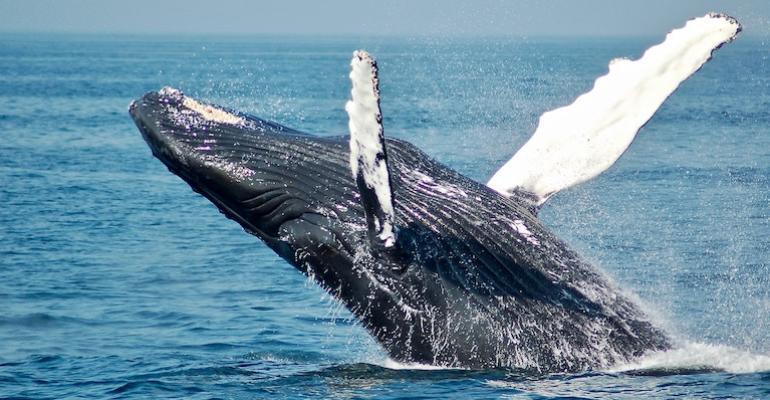Offshore wind has been a game-changer for the US maritime business; though in its early days, it has already stimulated orders for crewing vessels (CTVs), service/ operations vessels (SOVs), as well as creating healthy demand for ongoing survey work. While the offshore oil and gas sector in the Gulf of Mexico had been an upward trajectory into early 2023, a number of Jones Act compliant OSVs have found work along in the Northeast and mid-Atlantic.
On the landside, the economic benefits, including job creation, are also flowing; in preparation for servicing construction and ongoing operations, ports in New England that thrived in the 1800’s, and into the mid 1900’s are seeing a revival as they are being repurposed to serve offshore wind.
Two projects on the US East Coast, Vineyard Wind - 800 mW, Copenhagen Infrastructure Partners and utility Avangrid, and South Fork Wind - 130 mW, Ørsted and utility Eversource are under active development with initial electrons potentially flowing in late 2023/ early 2024.
Other areas around southern New England, the New York Bight, and off the mid-Atlantic states, notably New Jersey, but extending down past the Delmarva peninsula, are seeing extensive survey and pre-development work. Larger projects in the works off the coastline of New Jersey nicknamed “The Garden State” include utility PSEG/ Ørsted’s Ocean Wind 1 (ultimately 1.1 gW), Shell / EDF’s Atlantic Shores (ultimately 1.5 gW), and Equinor’s Empire Wind in partnership with bp - two projects that could ultimately exceed 2 gW. These projects are anticipated to come to fruition in the mid 2020s.
While the excitement is palpable, a new set of concerns has arisen- particularly in the waters off the “Garden State”. The number of whale deaths, with their carcasses then washed up on the beaches including those of the fabled “Jersey Shore”, has increased steadily in the past few years.
Offshore wind detractors have included local officials in seaside towns. Recently, efforts to impose a moratorium on offshore wind work have reached the State Senate in the Trenton (the state capital), where one group of local legislators, with a Republican bent, is seeking to suspend all work for a 60 day period.
There is uncertainty, and political conflict complemented by scientific uncertainties, about the cause of the whale deaths. The National Oceanic and Atmospheric Administration (NOAA), at the Federal level, has suggested that strikes by vessels not related to work on windfarms are to blame. Environmental groups, aligned with local legislators who are seeking to halt development temporarily have noted that whales navigate using sounds, and suggested that ongoing offshore activity during survey work may interfere with their internal navigation capabilities.
Commentators have noted that the Federal government, now in the hands of the Democrats, with its “30 by 30” (30 gW by 2030) intentions, wants to push ahead offshore wind development, that had been slowed during the years of Trump, a Republican, while the local interests are taking a more cautious view.
Looking ahead to the future, on the West Coast, the Port of Long Beach has recently announced an intention to launch a facility dubbed “Pier Wind”, which would service future floating wind projects, not expected to come online until the early 2030s, offshore California waters. In December 2022, the Bureau of Ocean Energy Management (BOEM, part of the US Department of the Interior) awarded leases off the coasts of northern and central California.
Copyright © 2024. All rights reserved. Seatrade, a trading name of Informa Markets (UK) Limited.
Add Seatrade Maritime News to your Google News feed.  |

